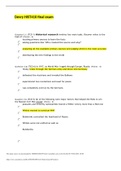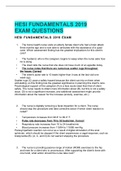Summary
Samenvatting artikelen Strategisch HRM
- Course
- Institution
De 15 artikelen van Strategisch HRM () worden overzichtelijk en netjes samengevat met een focus op de conceptuele modellen met toevoeging van enkele voorbeelden. Deze samenvatting is in het engels.
[Show more]












